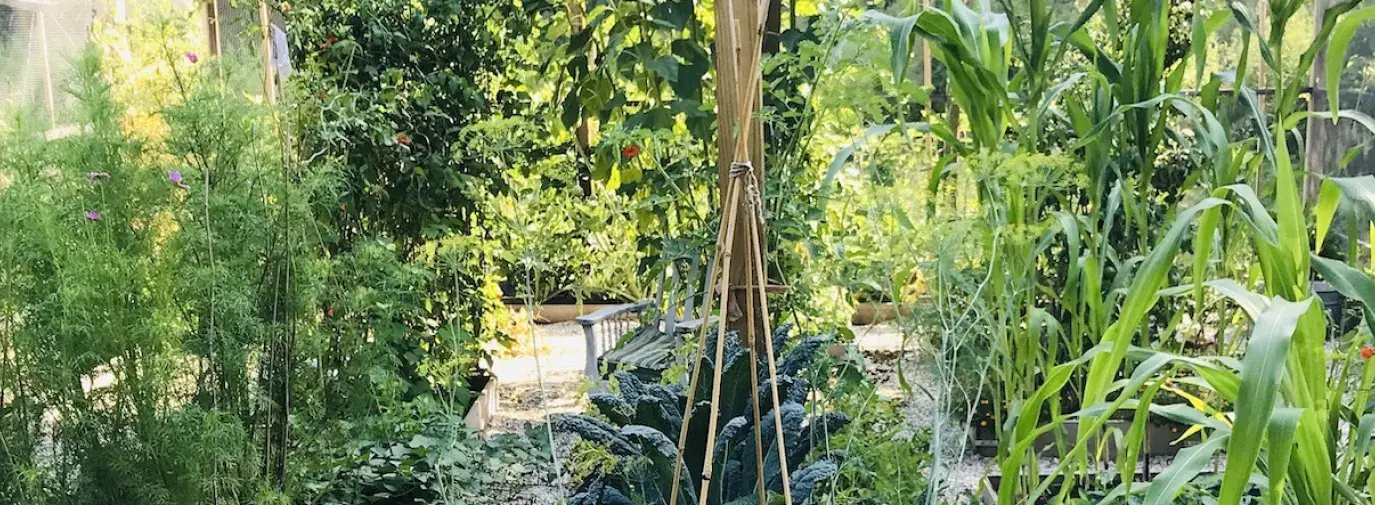
Written by Priscilla Woolworth, the author of the online Eco-Living Almanac and the book LOLA: Lots of Love Always, a book for young women who are adopting a sustainable lifestyle and making healthier choices. Here, she discusses the process of starting a Climate Victory Garden at her house, in the lowest waste way possible.
Even before starting renovations on the 1790’s house I bought in the Hudson Valley of New York, I created a Climate Victory Garden. My priority was to start growing my own food and share it with my family, friends, and the local food pantry as soon as possible. Living self-sufficiently, reducing waste by reusing as much as possible, growing food organically, saving seeds, planting a pollinator garden, and composting are all essential to me.
Location Location Location
First, I had to choose a location that wasn’t too far from the house, had lots of sun, and was reachable for the garden hose. I also wanted it to be close enough to the road so that people passing by could see it and hopefully get inspired.


While I had help building the 8-foot high deer-proof fence, I simultaneously assembled 27 raised beds, leaving enough room to walk around comfortably between them. Most of the fencing and bed materials were purchased new because of the quantity needed and to ensure long-lasting protection. This was more expensive, but better for the long term because they will withstand the extreme weather and won’t leach toxins into the soil. I used cedar posts and wire mesh fencing, installed 3 feet underground, to prevent diggers from getting into the garden.

Filling the Raised Beds
When it was time to fill the beds, I spread un-composted plant-based kitchen scraps like coffee grounds and old salad greens all over the bottom. As the material decomposes, it adds beneficial nutrients to the soil and attracts worms, which aerate the soil. Then I fill the beds with a mix of organic garden bed soil (which had to be delivered) and a sprinkle of centuries-old leaf mold, which I harvested in various areas of my woodland—being mindful to just take a little here and there.
While getting the beds ready, I started vegetable seeds in reusable plastic food containers.

When the seedlings emerged and were ready to be planted, I mulched around the new plantings with chopped up straw, which helps protect the roots from drying, reduces weeds, and eventually decomposes into the soil at the end of the season. I also used reusable ID stakes, so I don’t forget what I planted and where. I especially love these stakes because they used to belong to my grandmother in Maine.

Reducing Waste by Reusing
I’m mindful on a daily basis about reducing waste in my life, and I’ve found that the garden is one of the easiest places to be zero waste. Everything used in the garden can be reusable, and even seeds can be saved from each vegetable or flower for the following year’s garden. All plant material can be composted, creating healthy garden soil that also stores carbon, helps mitigate climate change, and allows for reuse and recycling of nutrients!


I made bamboo tipis for the cherry tomatoes and, as they grew, I secured the plants to the bamboo with stretchy, reusable, and repurposed panty hose, which allow the tomato plants to grow without cutting into their stems—just use the leg parts, which can each make two ties. I also used old drawers as planters to diversify the garden and use more found objects.




Compost Area
The next thing I needed was somewhere close to the garden for composting. The perfect spot had a ton of weeds, which had to first be cut back. Once the area was cleared up, it was enclosed using old posts and discarded weathered fences. Next, I laid down pieces of cardboard (free of tape, staples, and colored ink parts)—to discourage weeds from growing back—and started adding plant waste on top. These two semi-enclosed compost areas have plenty of room to put garden waste along with the kitchen scraps and leaf litter.

In the fall, when the garden is ready to be put to bed, I remove all the spent vegetables and add them to the compost area. I dig and turn the beds, add more un-composted plant-based kitchen scraps, and cover each bed with a layer of straw. Come spring, all I have to do is scrape off the straw and add it to the compost; then the beds are ready to be planted all over again.
My new home and Climate Victory Garden made it possible for my long-time dreams to come true. It feels good to be a respectful steward of the land, while using nourishing and waste-free practices. Plus, my children enjoy picking homegrown tomatoes!

Materials I bought once and reuse every year:
- Bamboo poles for staking tomatoes, peas, and tall flowers
- Nude pantyhose, for securing tomatoes to the bamboo poles
- Metal watering cans bought at flea markets
- Plastic food containers for sprouting seeds
- Plastic food netting, for carrying harvested vegetables like cherry tomatoes and peas, or mushrooms foraged in the woods
- Woven bamboo food covers used for harvesting greens and peas.
- Round aluminum pans for harvesting vegetables
Materials I found and reuse:
- An old weathered fence and wood posts for the compost area
- A wood chair found on the side of the road, for sitting in the middle of the garden
- Fallen branches used to create support for climbing vegetables like tomatoes and beans
- Rocks and chunks of bark used for edging on non-wood raised beds
- Cardboard, ripped up and added to the compost area
- Plant stakes and terra cotta pots from my grandmother
Read more inspiring Climate Victory Garden stories and tips.



